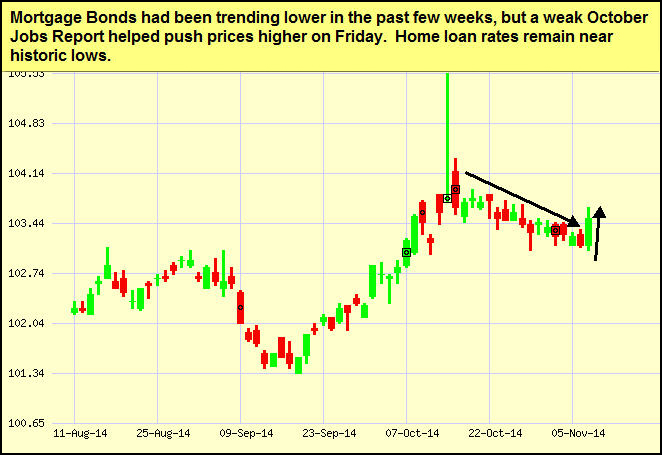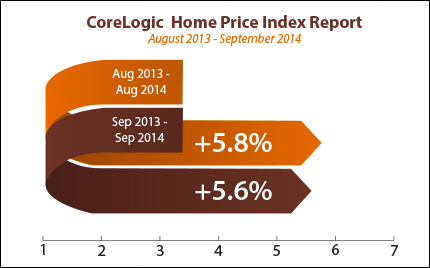| “Every day you may make progress.” Winston Churchill. The labor market has made great strides this year, as the economy has averaged 229,000 new jobs per month in 2014, the fastest pace since 1999. However, key details in the latest report show more progress is needed.
On the surface, there was good news as the Unemployment Rate fell to 5.8 percent from 5.9 percent, reaching its lowest rate since July 2008. However, wage growth remains tepid, as hourly earnings rose by only 3 cents, with the year-over-year increase at just 2 percent. And the Labor Force Participation Rate (LFPR) came in at 62.8 percent, still near the lows last seen in 1978. The LFPR measures the proportion of working-age Americans who have a job or are looking for one, and it should be moving higher in a recovery. In housing news, research firm CoreLogic reported that home prices, including distressed sales, rose at an annual pace of 5.6 percent in September. This was the slowest annual rate since August 2012, and well below the 11.8 percent gain recorded this past February. Housing price gains are definitely trending lower after their meteoric highs last year. The bottom line is that home loan rates remain near some of their best levels of the year, and now is a great time to consider a home purchase or refinance. Let me know if I can answer any questions at all for you or your clients. |
| Forecast for the Week |
The economic calendar is quiet this week, but the second half of the week features several key reports.
Remember: Weak economic news normally causes money to flow out of Stocks and into Bonds, helping Bonds and home loan rates improve, while strong economic news normally has the opposite result. The chart below shows Mortgage Backed Securities (MBS), which are the type of Bond on which home loan rates are based. When you see these Bond prices moving higher, it means home loan rates are improving—and when they are moving lower, home loan rates are getting worse. To go one step further—a red “candle” means that MBS worsened during the day, while a green “candle” means MBS improved during the day. Depending on how dramatic the changes were on any given day, this can cause rate changes throughout the day, as well as on the rate sheets we start with each morning. As you can see in the chart below, Mortgage Bonds improved after the October Jobs Report was released. Home loan rates remain near historic lows and I will continue to monitor their movement. Chart: Fannie Mae 3.5% Mortgage Bond (Friday Nov 07, 2014)

|




